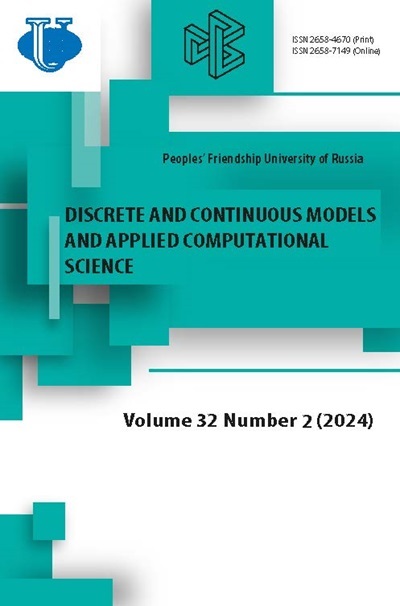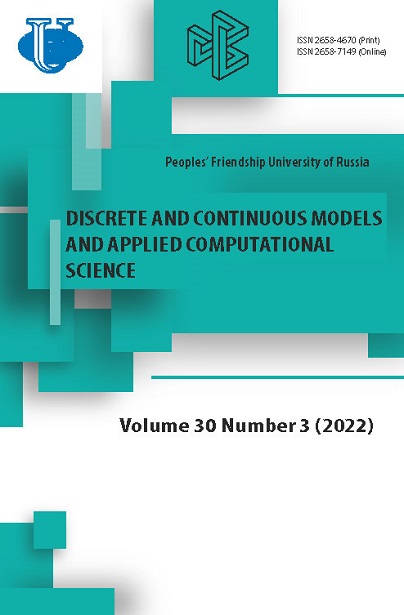Обнаружение кибератак на интеллектуальные энергосистемы с использованием неконтролируемых моделей глубокого обучения
- Авторы: Щетинин Е.Ю.1, Велиева Т.Р.2
-
Учреждения:
- Финансовый университет при Правительстве Российской Федерации
- Российский университет дружбы народов
- Выпуск: Том 30, № 3 (2022)
- Страницы: 258-268
- Раздел: Статьи
- URL: https://journals.rudn.ru/miph/article/view/32206
- DOI: https://doi.org/10.22363/2658-4670-2022-30-3-258-268
Цитировать
Полный текст
Аннотация
Современные интеллектуальные энергосети объединяют передовые информационные и коммуникационные технологии в традиционные энергосистемы для более эффективного и устойчивого снабжения электроэнергией, что создаёт уязвимости в их системах безопасности, которые могут быть использованы злоумышленниками для проведения кибератак, вызывающих серьезные последствия, такие как массовые перебои в подаче электроэнергии и повреждение инфраструктуры. Существующие методы машинного обучения для обнаружения кибератак в интеллектуальных энергетических сетях в основном используют классические алгоритмы классификации, которые требуют разметки данных, что иногда сложно, а то и невозможно. В данной статье представлен новый метод обнаружения кибератак в интеллектуальных энергетических сетях, основанный на слабых методах машинного обучения для обнаружения аномалий. Полуконтролируемое обнаружение аномалий использует только экземпляры обычных событий для обучения моделей обнаружения, что делает его подходящим для поиска неизвестных событий атак. В ходе исследования был проанализирован ряд популярных методов обнаружения аномалий с полууправляемыми алгоритмами с использованием общедоступных наборов данных о кибератаках на энергосистемы для определения наиболее эффективных из них. Сравнение производительности с популярными управляемыми алгоритмами показывает, что полууправляемые алгоритмы лучше способны обнаруживать события атак, чем управляемые алгоритмы. Наши результаты также показывают, что производительность полуконтролируемых алгоритмов обнаружения аномалий может быть дополнительно улучшена за счёт усовершенствования модели глубокого автоэнкодера.
Об авторах
Е. Ю. Щетинин
Финансовый университет при Правительстве Российской Федерации
Автор, ответственный за переписку.
Email: riviera-molto@mail.ru
ORCID iD: 0000-0003-3651-7629
Doctor of Physical and Mathematical Sciences, Lecturer of Department of Mathematics
Ленинградский проспект, д. 49, Москва, 125993, РоссияТ. Р. Велиева
Российский университет дружбы народов
Email: velieva-tr@rudn.ru
ORCID iD: 0000-0003-4466-8531
Candidate of Sciences in Physics and Mathematics, Senior lecturer of Department of Applied Probability and Informatics
ул. Миклухо-Маклая, д. 6, Москва, 117198, РоссияСписок литературы
- G. Dileep, “A survey on Smart Grid technologies and applications,” Renewable Energy, vol. 146, pp. 2589-2625, 2020. doi: 10.1016/j.renene.2019.08.092.
- V. C. Gungor, D. Sahin, T. Kocak, S. Ergut, C. Buccella, C. Cecati, and G. P. Hancke, “Smart Grid technologies: communication technologies and standards,” IEEE Transactions on Industrial Informatics, vol. 7, no. 4, pp. 529-539, 2011. doi: 10.1109/TII.2011.2166794.
- T. Flick and J. Morehouse, Securing the Smart Grid: Next Generation Power Grid Security. Syngress, 2010.
- S. Aftergood, “Cybersecurity: the cold war online,” Nature, vol. 547, no. 7661, pp. 30-31, Jul. 2017. doi: 10.1038/547030a.
- C. Chio and D. Freeman, Machine learning and security: protecting systems with data and algorithms. O’Reilly Media, 2018.
- D. S. Berman, A. L. Buczak, J. S. Chavis, and C. L. Corbett, “A survey of deep learning methods for cyber security,” Information, vol. 10, no. 4, 2019. doi: 10.3390/info10040122.
- D. Wang, X. Wang, Y. Zhang, and L. Jin, “Detection of power grid disturbances and cyber-attacks based on machine learning,” Journal of Information Security and Applications, vol. 46, pp. 42-52, 2019. doi: 10.1016/j.jisa.2019.02.008.
- S. Ahmed, Y.-D. Lee, S.-H. Hyun, and I. Koo, “Unsupervised machine learning-based detection of covert data integrity assault in Smart Grid networks utilizing isolation forest,” IEEE Transactions on Information Forensics and Security, vol. 14, pp. 2765-2777, 2019.
- M. Ozay et al., “Machine learning methods for attack detection in the Smart Grid,” IEEE Transactions on Neural Networks and Learning Systems, vol. 27, pp. 1773-1786, 2016.
- V. K. Singh and M. Govindarasu, “Decision tree based anomaly detection for remedial action scheme in Smart Grid using PMU data,” in IEEE Power & Energy Society General Meeting PESGM, 2018, pp. 1-5. doi: 10.1109/PESGM.2018.8586159.
- G. Pang, C. Shen, L. Cao, and A. V. D. Hengel, “Deep learning for anomaly detection: a review,” ACM Comput. Surv., vol. 54, no. 2, 2021. doi: 10.1145/3439950.
- Z. E. Huma, S. Latif, J. Ahmad, Z. Idrees, A. Ibrar, Z. Zou, F. Alqahtani, and F. A. Baothman, “A hybrid deep random neural network for cyberattack detection in the Industrial Internet of Things,” IEEE Access, vol. 9, pp. 55 595-55 605, 2021. doi: 10.1109/ACCESS.2021.3071766.
- M. S. Minhas and J. Zelek, “Semi-supervised anomaly detection using autoencoders,” Journal of Computational Vision and Imaging Systems, vol. 5, no. 1, p. 3, 2019.
- M. Wieler. “Weakly supervised learning for industrial optical inspection.” (2007), [Online]. Available: https://hci.iwr.uni-heidelberg.de/node/3616.
- R. Qi, C. Rasband, J. Zheng, and R. Longoria, “Semi-supervised outlier detection and deep feature extraction for detecting cyber-attacks in Smart Grids using PMU data,” Advances in Intelligent Systems and Computing, vol. 1134, pp. 509-515, 2020. doi: 10.1007/978-3-03043020-7_67.
- E. Y. Shchetinin, “On methods of quantitative analysis of the company’s financial indicators under conditions of high risk of investments,” Discrete and Continuous Models and Applied Computational Science, vol. 28, no. 4, pp. 346-360, 2020. doi: 10.22363/2658-4670-2020-28-4-346-360.
- E. Y. Shchetinin, “Modeling the energy consumption of smart buildings using artificial intelligence,” in CEUR Workshop Proceedings, vol. 2407, 2019, pp. 130-140.
- E. Y. Shchetinin, “Development of Energy Saving Technologies for Smart Buildings by Using Computer Algebra,” Programming and Computer Software, vol. 46, pp. 324-329, 2020. doi: 10.1134/S0361768820050084.
















